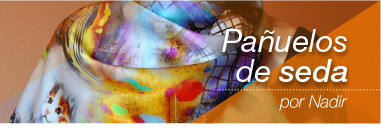Blog
The History of the expansion of the Spanish State Art Collections, with its artistic value and financial benefit, Spain says art submitted in lieu of tax should be part of key artists of Spanish art..
The History of the expansion of the Spanish State Art Collections, with its artistic value and financial benefit, Spain says art submitted in lieu of tax should be part of key artists of Spanish art History, you’d better be picky.
Taxpayers will have to save cash since the state declined to acquire the works for public collections, unless it’s really valuable.
Francisco de Goya's “Tobias and the angel”, around 1787, was acquired by the Museum El Prado from the collection of the savings bank Caja Madrid, as well as the famous painting “Holy Family”.
Recently the State tends to be meticulous about its art and many of its acquisitions in lieu of tax were by key artists from Spanish art history. These works, largely from corporations and banks, have enlarged the important collections of the Prado and Reina Sofia museums. For example, between 2002 and 2003, the State acquired four masterpieces by Francisco de Goya from the savings bank Caja Madrid that went to the Museum El Prado, including Holy Family and Tobias and the angel in lieu of €3.5m in taxes and Young St John the Baptist in the desert (€4.2m). The Prado received another work by Goya in 1995 instead of tax from Bankinter bank.
Other works accepted by the State which went to the Prado include The Crucifixion, one of the most significant works by the anonymous Early Netherlandish artist Juan de Flandes (John of Flanders), from the building company Ferrovial (€7m in 2005); Lucas Cranach’s Virgin and Child, St John and Angels was obtained from the collection of an outstanding art collector and businessman Juan Abelló in 1988; and around 40 still-lives (€26m in 2006) from the collection of art of Rosendo Naseiro’s family, acquired through the BBVA Foundation.
While The Reina Sofía inherited key works of Pablo Picasso, the most famous Spanish artist nowadays, including The Swimmer, in addition to the artworks from the collection of Juan Abelló in 1988, the sculpture “Head of a Woman” (Fernande) (€6m in 2002) and “Portrait of Dora Maar” (€3.8m in 2005), both from the bank Caja Madrid. The bank regularly paid its taxes in art, including six works by Juan Gris (€6m) and a work by surrealist Joán Miró (€3.6m) in 2002, and two paintings by abstract expressionist Mark Rothko (€3.2m) and latinamerican modernist Tarsila do Amaral (€2.4m) in 2003. The inheritors of Joan Miró and a postwar artist Antonio Saura also resorted to the art in lieu plan to pay their inheritance tax, with 61 works by Saura accepted in 2005 that went to the Museum Reina Sofía.
Another highlight was the acquisition of the collection of 470 artwoks by Mariano Fortuny, now dwelling in the Museum of Costume in Madrid, which was accepted in 2003 in lieu of a €3m tax bill from the clothing Inditex Group.
All in all, from 1999 to 2014, the State got hold of works of art in lieu of taxes amounting to €188.6m; this mainly came in large blocks, with €137m received from 1999 to 2003, €45.4m from 2005 to 2007, and €4.5m in 2010. In other years, the figures were low, according to data from the Ministry of Culture.




